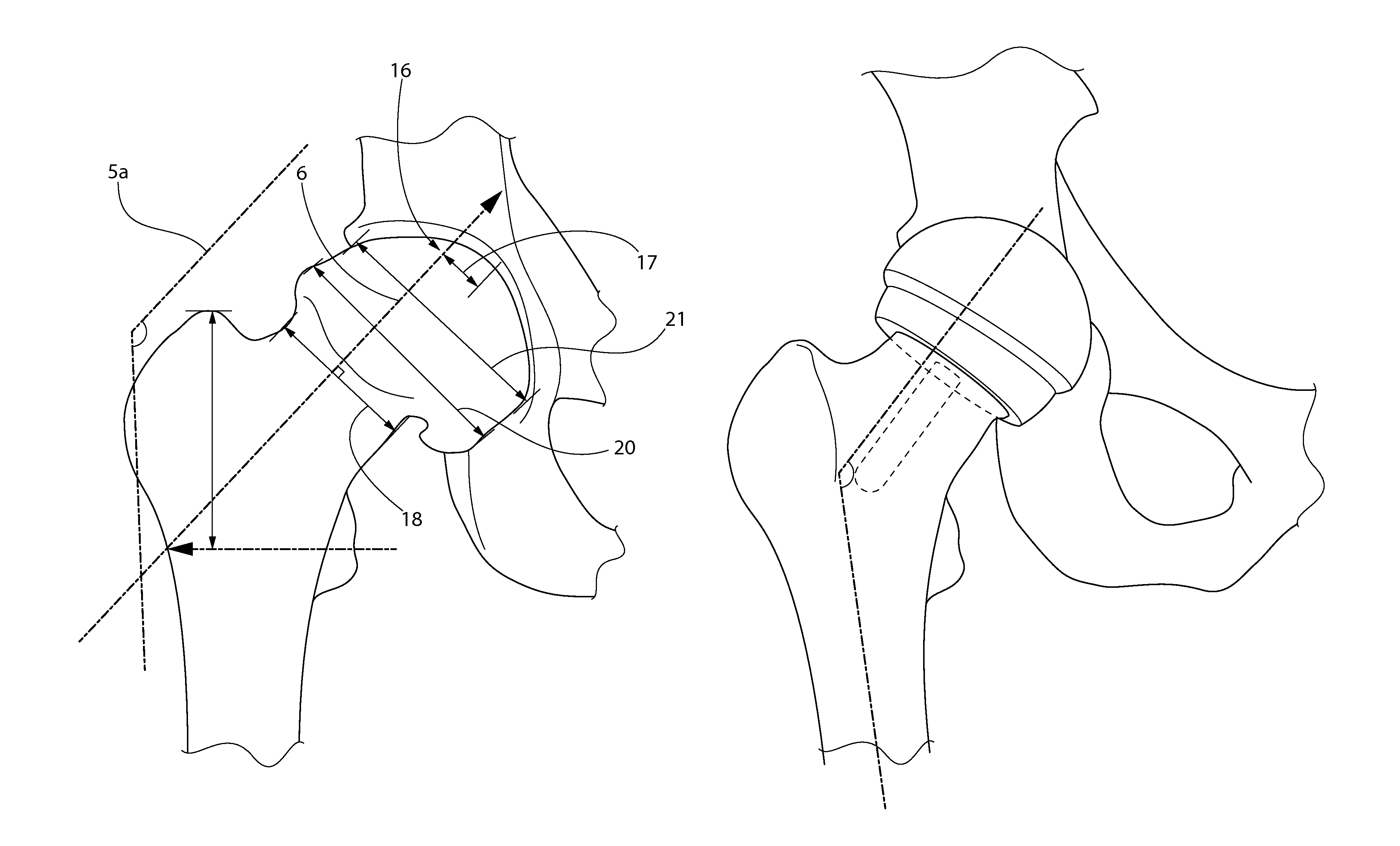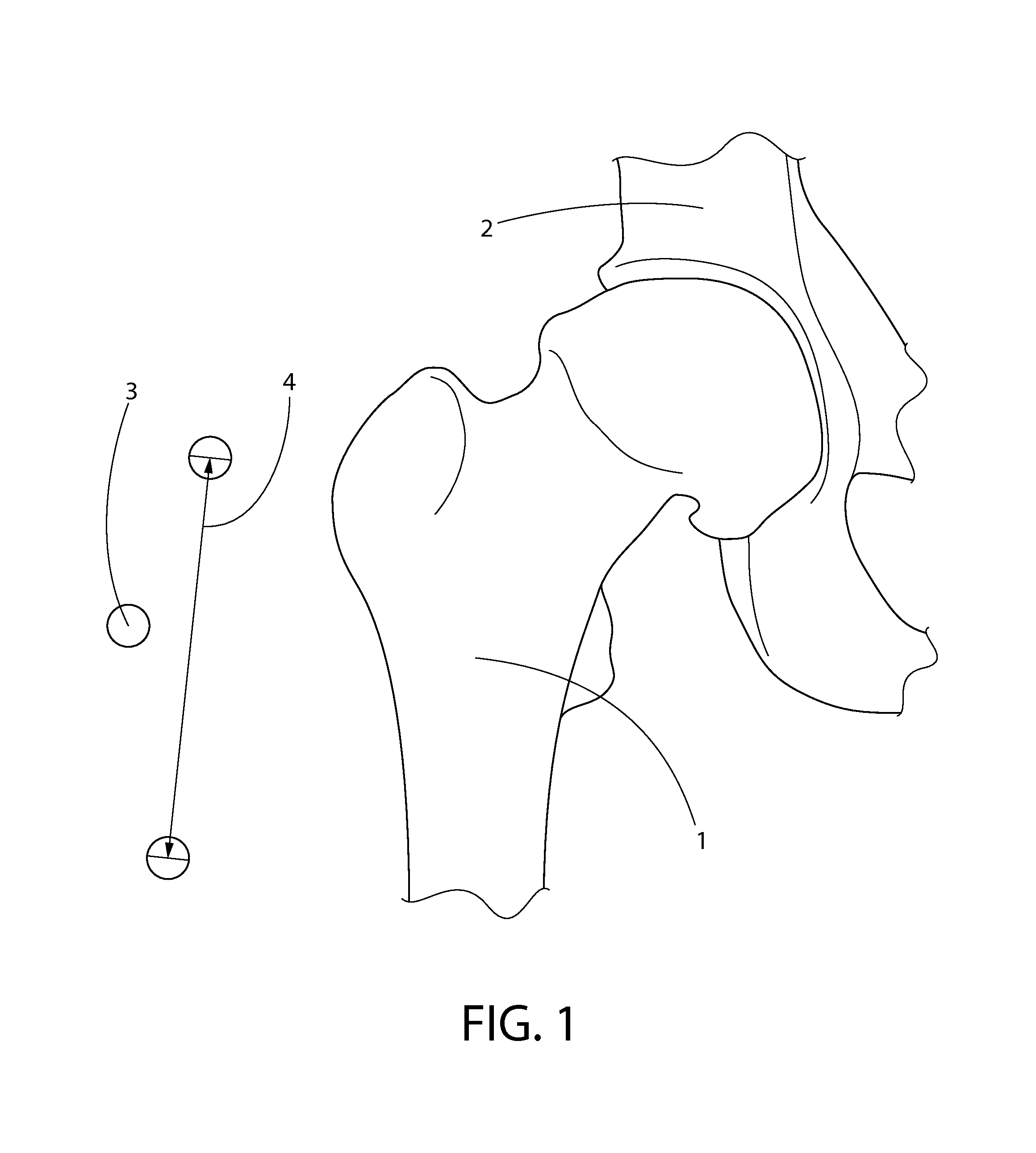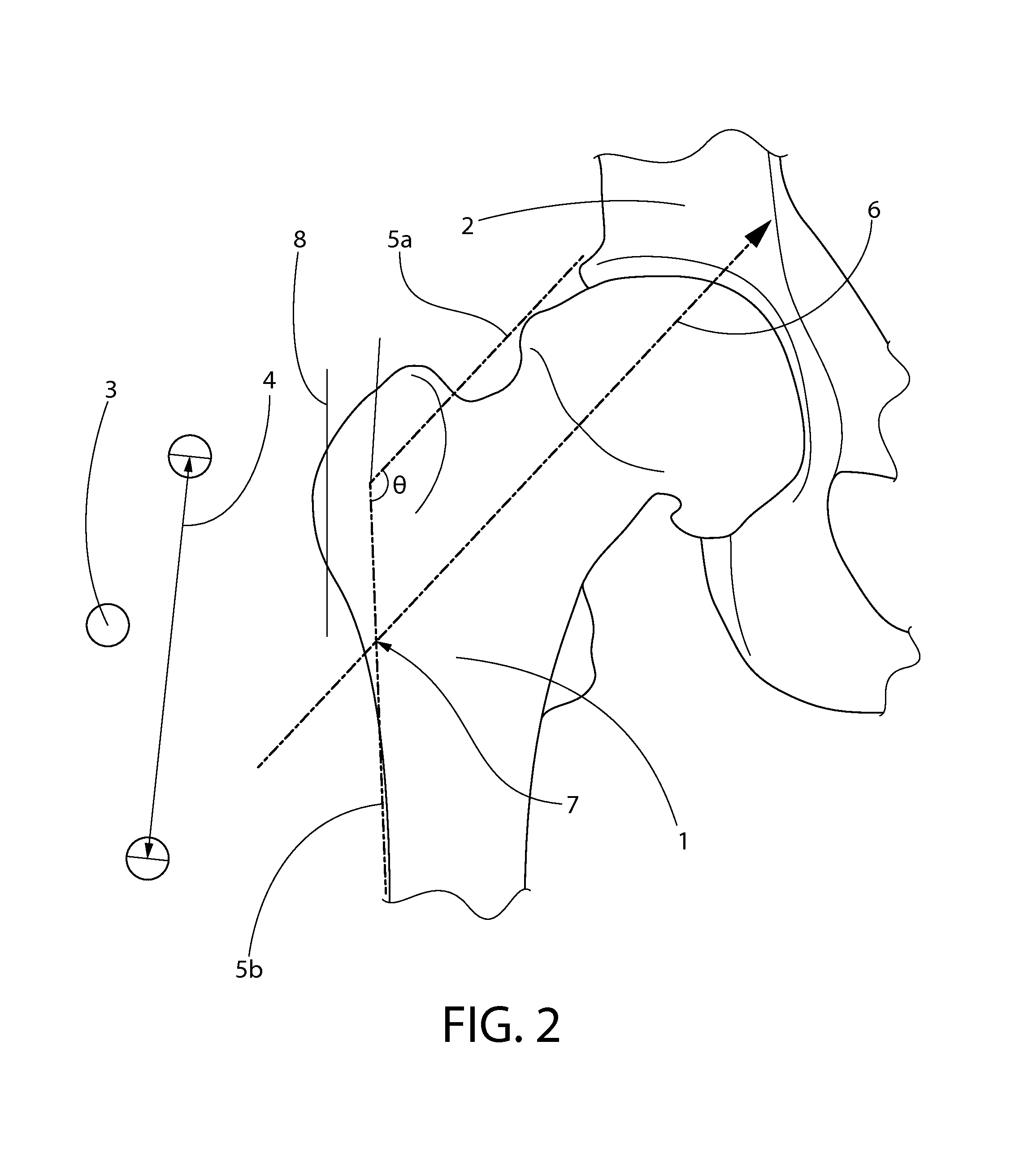Measurement and placement techniques in hip resurfacing and the like
a hip resurfacing and measurement and placement technology, applied in the field of measurement and placement techniques used in joint replacement surgery, can solve the problems of joint loosening and consequential failure, pain, extensive and expensive revisions, extreme force loading, etc., and achieve outstanding component positioning and accelerate the learning curve
- Summary
- Abstract
- Description
- Claims
- Application Information
AI Technical Summary
Benefits of technology
Problems solved by technology
Method used
Image
Examples
Embodiment Construction
[0047]In accordance with the foregoing summary, the following provides a detailed description of the preferred embodiment, which is presently considered to be the best mode thereof.
[0048]FIG. 1 is an x-ray image showing image scaling, a first step in the measurement and component placement process, in accordance with the described embodiment of the present invention. This shows the scaling process whereby the marker ball device is used to confirm the scaling / sizing of the x-ray. The first step of the technique is best performed on very detailed and high quality anterior or posterior pelvis radiographs as well as anterior and posterior radiographs of the affected hip along with a lateral x-ray of the affected hip. This may typically be obtained from an image stored in the electronic medical records of the patient, such as a Picture Archiving and Communication System (PACS) radiology system (such as, for example, the Synapse system commercially available from Fuji USA or the NovoPACS ...
PUM
 Login to View More
Login to View More Abstract
Description
Claims
Application Information
 Login to View More
Login to View More - R&D
- Intellectual Property
- Life Sciences
- Materials
- Tech Scout
- Unparalleled Data Quality
- Higher Quality Content
- 60% Fewer Hallucinations
Browse by: Latest US Patents, China's latest patents, Technical Efficacy Thesaurus, Application Domain, Technology Topic, Popular Technical Reports.
© 2025 PatSnap. All rights reserved.Legal|Privacy policy|Modern Slavery Act Transparency Statement|Sitemap|About US| Contact US: help@patsnap.com



